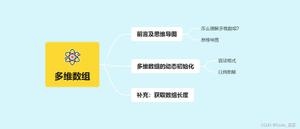将如何在Java中实现LRU缓存?
不要说EHCache或OSCache等。出于这个问题的目的,假设我想仅使用SDK实现自己的实现(边做边学)。考虑到缓存将在多线程环境中使用,你将使用哪些数据结构?我已经使用LinkedHashMap和Collections#synchronizedMap实现了一个,但是我很好奇是否有任何新的并发集合会更好。
更新:当我发现这个块时,我只是在阅读Yegge的最新文章:
如果你需要固定时间的访问权限并希望保持插入顺序,那么做一个比一个真正出色的数据结构LinkedHashMap更好的选择。可能更妙的唯一方法是有并发版本。可惜。
在进行上面提到的LinkedHashMap+ Collections#synchronizedMap实现之前,我一直在思考几乎完全相同的事情。很高兴知道我并没有忽略某些事情。
根据到目前为止的答案,听起来对于高并发LRU来说,我最好的选择是使用一些使用相同的逻辑来扩展ConcurrentHashMapLinkedHashMap。
回答:
我很喜欢这些建议,但现在我还是坚持使用LinkedHashMap+ Collections.synchronizedMap。如果以后再讨论这个问题,我可能会ConcurrentHashMap以LinkedHashMapextends 相同的方式进行扩展HashMap。
更新:
根据要求,这是我当前实现的要点。
private class LruCache<A, B> extends LinkedHashMap<A, B> { private final int maxEntries;
public LruCache(final int maxEntries) {
super(maxEntries + 1, 1.0f, true);
this.maxEntries = maxEntries;
}
/**
* Returns <tt>true</tt> if this <code>LruCache</code> has more entries than the maximum specified when it was
* created.
*
* <p>
* This method <em>does not</em> modify the underlying <code>Map</code>; it relies on the implementation of
* <code>LinkedHashMap</code> to do that, but that behavior is documented in the JavaDoc for
* <code>LinkedHashMap</code>.
* </p>
*
* @param eldest
* the <code>Entry</code> in question; this implementation doesn't care what it is, since the
* implementation is only dependent on the size of the cache
* @return <tt>true</tt> if the oldest
* @see java.util.LinkedHashMap#removeEldestEntry(Map.Entry)
*/
@Override
protected boolean removeEldestEntry(final Map.Entry<A, B> eldest) {
return super.size() > maxEntries;
}
}
Map<String, String> example = Collections.synchronizedMap(new LruCache<String, String>(CACHE_SIZE));
以上是 将如何在Java中实现LRU缓存? 的全部内容, 来源链接: utcz.com/qa/430045.html









